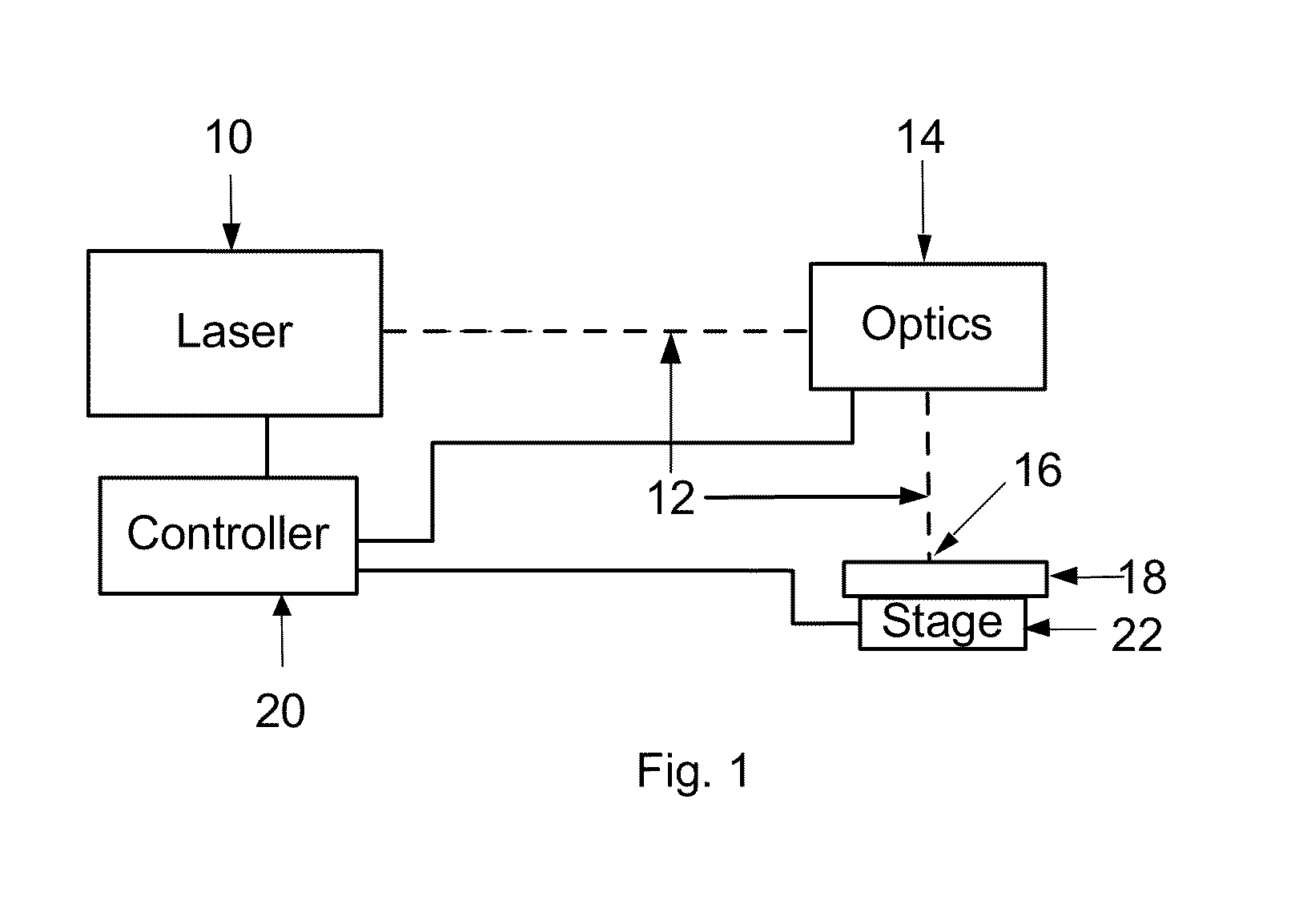Method and apparatus for reliably laser marking articles
a laser marking and laser technology, applied in the field of laser marking anodized articles, can solve the problems of damage to the anodization, material, time and resources, measurement of the duration of complex pulses, etc., and achieve the effects of a greater range of colors and optical densities, improved accuracy, and improved accuracy
- Summary
- Abstract
- Description
- Claims
- Application Information
AI Technical Summary
Benefits of technology
Problems solved by technology
Method used
Image
Examples
Embodiment Construction
[0029]Aspects of this invention mark anodized aluminum articles with visible marks of various optical densities and colors, durably, selectably, predictably, and repeatably. It is advantageous for these marks to appear on or near the surface of the aluminum and leave the anodization layer substantially intact to protect both the surface and the marks. Marks made in this fashion are referred to as interlayer marks since they are made at or on the surface of the aluminum beneath the oxide layer that forms the anodization. Ideally the oxide remains intact following marking in order to protect the marks and provide a surface that is mechanically contiguous between adjacent marked and non-marked regions. Further, these marks should be able to be produced reliably and repeatably, meaning that if a mark with a specific color and optical density is desired, a set of laser parameters is known which will produce the desired result when the anodized aluminum is processed by a laser processing ...
PUM
| Property | Measurement | Unit |
|---|---|---|
| wavelength ranges | aaaaa | aaaaa |
| size | aaaaa | aaaaa |
| power | aaaaa | aaaaa |
Abstract
Description
Claims
Application Information
 Login to View More
Login to View More - R&D
- Intellectual Property
- Life Sciences
- Materials
- Tech Scout
- Unparalleled Data Quality
- Higher Quality Content
- 60% Fewer Hallucinations
Browse by: Latest US Patents, China's latest patents, Technical Efficacy Thesaurus, Application Domain, Technology Topic, Popular Technical Reports.
© 2025 PatSnap. All rights reserved.Legal|Privacy policy|Modern Slavery Act Transparency Statement|Sitemap|About US| Contact US: help@patsnap.com



